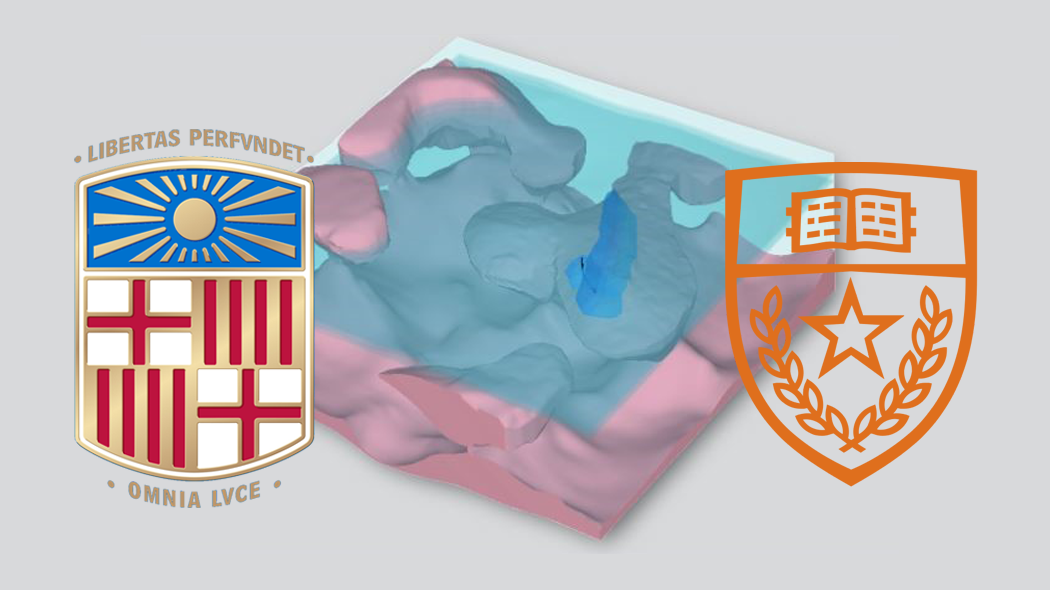14.07.2021
Collaboration at its Finest

by John Cain
We were asked by both Toby Harrold and Oscar Fernandez a number of years ago if Rockfield would like to collaborate on a PhD for a then unknown Jean Joseph van der Linden d’Hooghvorst who was going to undertake his PhD at Universitat de Barcelona and Texas GeoSciences being sponsored by Repsol.
Rockfield have always promoted PhD studies both within Rockfield and by providing external students training, software licenses and support during their study period so we jumped at the chance straight away. The title of the study was “GEOMECHANICAL STUDY OF THE TARFAYA BASIN WEST AFRICAN COAST USING 3D/2D STATIC MODELS AND 2D EVOLUTIONARY MODELS” so this was something close to our heart and having our forward modelling software to be pushed to its limits was also something we looked forward to.
What we didn’t know back then was what was to come out of the PhD and more importantly the Thesis. I have to say that this is one of the most comprehensive studies ever undertaken using both Static and Forward Modelling methods and as a company we are delighted to have been a part of it.
Figure 1. Title cover for PhD Thesis
Abstract
This thesis uses different variants of geomechanical modelling approaches to investigate stress, strain and geometry distribution and evolution through time of the Tarfaya salt basin, located on the West African coast. This work has been conducted by geomechanically simulating a sector of the Tarfaya basin containing key features such as diapirs, faults and encasing sediments using 3D and 2D static models and 2D evolutionary models. The study will allow to conclude whether it is possible to adopt 2D models as a good approximation of the more complex 3D models. In addition, this research tests the viability of applying evolutionary geomechanical modelling to a real basin to obtain insights of the basin formation and evolution through time.
The 3D and 2D static geomechanical models of the Tarfaya basin system allowed to predict the stresses and strains in the basin at present day and compare the results between both approaches and with wellbore data.
Both models are based on present-day basin geometries extracted from seismic data and use a poro-elastic description for the sediments based on calibrated log data and a visco-plastic description for the salt based on values from Avery Island. The models predict a significant horizontal stress reduction in the sediments located at the top of the principal salt structure that was modelled, named the Sandia diapir. This stress reduction is consistent with the measured data coming from an exploratory well drilled above Sandia. However, the 2D static geomechanical model shows broader areas affected by the stress reduction compared to the 3D model and overestimates its magnitude by less than 1.5 MPa. The pattern of differential displacements seen in both 3D and 2D models for the sediments on top of the Sandia diapir is similar. These results highlight the possibility of using 2D static modelling as a valid approximation to the more complex and time consuming 3D static models.
Figure 2. Schematic of 3D Static Model
In conclusion, the results obtained during this study allowed us to understand the formation and evolution of the diapirs in the Tarfaya basin using carefully built geomechanical models. In particular, the 3D and 2D static models have provided useful insights in the mechanics of the present-day distribution of stresses above the salt. Although the 3D static models are a more complete description of the problem, the study demonstrates that carefully built 2D static models can provide information comparable to the 3D models, but without the time and computational power requirements of the 3D models. That makes the 2D approach very appropriate for the exploration stages of a particular prospect. If carefully built, such 2D models can approximate and yield useful information, even from complex 3D structures such as the Tarfaya basin salt structures. This thesis also concludes that incorporating kinematic restoration data into 2D evolutionary models provides insights into the key parameters controlling the evolution of the studied system. Furthermore, it enables more realistic geomechanical models, which, in turn, provide more insights into sediment stress and porosity.
Figure 3. Forward modelling of the Sandia Salt Diapir
We as a company are delighted to have been a part of this collaboration and genuinely believe that this Thesis will become a go-to read for enthusiasts within the Oil & Gas discipline and would like to wish Jean-Joseph all the very best in the future. If anybody has further interest in this Thesis, I suggest you contact Jean-Joseph.
If you are simulating problems within one of the application areas we’ve mentioned or you’re facing a different challenge that we can help with, then get in touch.
Share your thoughts by dropping us a line at john.cain@rockfieldglobal.com.

